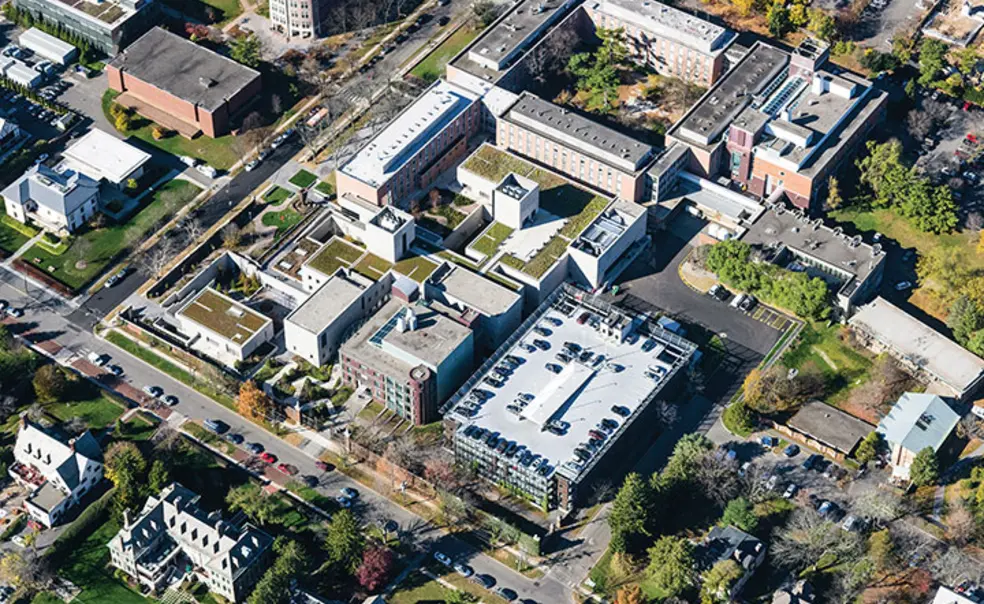Time for a New EQuad?
Engineering task force backs new facilities, creation of a bioengineering institute
As part of PAW’s continuing coverage of the work of the University’s strategic-planning task forces, this issue describes the task force report on the School of Engineering and Applied Science.
The engineering school’s top priority is to replace its main building — the 275,000-square-foot EQuad, built in 1962 — with facilities that offer modern, flexible, and collaborative space. The report also said space is needed to accommodate growth in the computer science department.
Many of Princeton’s peers, including Stanford, MIT, and Harvard, have “invested heavily” in new engineering facilities in recent years, the report said, suggesting that up-to-date buildings “can transform the school’s research and teaching environment.”
The task force noted that over the last 13 years, the engineering school has seen significant growth — undergraduate enrollment is up 80 percent, graduate enrollment has expanded by 18 percent, and the faculty has grown by 12 percent. Currently, one in four Princeton undergraduates is majoring in engineering.
Among the recommendations:
- Create a Princeton Bioengineering Institute that would encourage research “with critical implications for understanding life, advancing human health, and addressing environmental challenges.” The institute would draw researchers from different fields in engineering and the natural sciences.
- Emphasize three emerging research areas: resilient and smart cities (technological solutions to help cities respond to change and use resources more efficiently), data and information, and robotics and intelligent systems
- Hire an associate dean for diversity within the engineering school. This was one of several recommendations to expand diversity efforts.
- Revise the freshman-year curriculum to make engineering more accessible to a broader range of students, and offer additional courses on technology targeted to non-engineering students. The task force also called for a focus on service, introducing students “to using design thinking and engineering innovation for public service.”
- Change the academic calendar to include a January term, providing more study-abroad opportunities.
- Establish Ph.D. programs in applied physics and in materials science and engineering.












1 Response
Helen M. Hunt *71
9 Years AgoThe Bioengineering Task Force...
The Bioengineering Task Force strongly recommends construction of a new 275,000-square-foot main EQuad building. Frick, the modern chemistry building, is 265,000 square feet, a good “model” for planning. Parking lots 4, 5, 25, 14 off Ivy Lane together might be converted to a sufficiently large vacant site for the new EQuad. Did the task force suggest a preferred site?